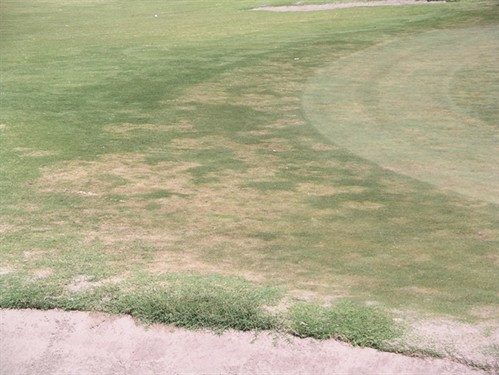Happy New Year! This represents the 206th issue of TechNotes-SH since the first issue was published in 2003. And yes, I still have all of them! What better way to start of the New Year than talking about turf maladies.
Managing turfgrasses whether cool or warm season often involves dealing with complex and interactive factors of plant health, environment and pests. Often when the turf suffers or declines and we are not sure of the cause or causes we describe the problem as "bentgrass decline", "bermudagrass (couch grass)decline", or "centipedegrass decline" to name a few. In some cases we have discovered the primary cause of the decline but not to everyone's satisfaction.
From my experiences declines and to add a few "root diebacks, declines" do have a few things in common. Most of the declines start to occur with a change in season. For example, warm season turfgrass declines tend to occur most often with the season moving from winter to spring, or fall to winter.
On cool season turfgrasses, it is most often spring to summer. The second characteristic of declines is the loss or dieback of the root system.
Changes in root growth are often directly related seasonal weather characteristics. The optimum temperature for root growth differs between cool and warm season turfgrasses. Given that the optimum root growth occurs within a soil temperature range, it makes sense outside that range or the transition from sub-optimum to optimum soil temperatures or vice versa would be where plants are likely to be susceptible to soil types of maladies.
Increasingly turf declines are associated with ectotrophic root infecting (ERI) fungi. One of the first ERI pathogens (Gaeumannomyces graminis var. avenae) was the cause of take-all patch. Related to that was "bermudagrass decline", which had symptoms similar to take-all. The organism that reportedly causes "bermudagrass decline" is Gaeumannomyces graminis var. graminis). The common name for this disease has since been changed or expanded to "root decline of warm season turfgrasses".
In both cases infection occurs during the transition period of spring to summer and summer to fall. Symptoms are often expressed later in combination with an environmental stress (ex. moisture, temperature). Control measures should be targeted during these periods of infection.
Although the above examples are associated with specific pathogens, other ERI fungi have been associated with other biotic pathogens like nematodes. In other instances declines are often associated with specific environmental conditions. In the next issue of TechNotes-SH we will further look into the complex declines.

